By Jonathan F. Keiler
In the wan North African light on February 14, 1943, Lt. Col. John Waters watched columns of dust rise from the east. Too late, he and the other Americans of Combat Command C of the 1st Armored Division realized that they were under attack by dozens of German panzers and thousands of panzergrenadiers from the battled-hardened 10th Panzer Division.
Signal rockets from both sides arched into the dawn sky, and hundreds of German artillery shells and tank rounds fell on American positions at Djebel Lessouda, a desolate hill between the Grand and Eastern Dorsals of central Tunisia. U.S. artillery tried to respond, but the German tanks were already under and through the guns’ preregistered target areas. Waters told his artillery officer to move the guns back and open fire.
As their frightened crews pulled the guns out, they were caught and overrun by the panzers. Waters’ own tanks were unable to stop the onrushing assault, as one after another “brewed up” from German fire. Before the long morning was over and the sun reached its zenith, the Germans captured Lt. Col. Waters, West Point Class of 1931, son of a Baltimore banker and son-in-law of Maj. Gen. George S. Patton, Jr.
Seemingly, Waters’ war was over. Yet, his capture would indirectly lead to the death or imprisonment of hundreds of other Americans. However, this would come years in the future, on a continent and battlefield far from the scorched deserts of Tunisia.
Abraham Baum; Son of a Blouse Cutter
While Waters and his men fought for their lives on Djebel Lessouda, 1st Lt. Abraham Baum looked forward to completing his infantry training and joining the fight against Hitler’s Germany. The son of a Jewish blouse cutter from New York’s Garment District, Baum’s background was nothing like that of the pedigreed Waters’. Fourteen years Waters’ junior, Baum enlisted as a private in December 1941 and worked his way to a junior officer’s commission. He had yet to deploy overseas, much less come to grips with the Wehrmacht.
In December 1943, Baum shipped out to Great Britain with the 10th Armored Infantry Battalion of the 4th Armored Division. In July 1944, Baum and the 4th Armored embarked on a nine-month marathon of continuous combat that would bring glory and honor to the division and the U.S. Third Army, commanded by now Lt. Gen. George Patton. The 4th Armored benefited much from lessons learned in Tunisia and paid for by Waters and others like him, many of whom forever remain there.
By chance, these two soldiers’ paths would cross and their fates, for a time, would become common and joined, but not until the war itself was almost at its end, near an obscure and mostly forgotten German town called Hammelburg. Waters and Baum are unsung American heroes, whose glory lay in honorable defeats against long and difficult odds.
Waters’ Arrives in North Africa
Lieutenant Colonel Waters arrived in Tunisia in late 1942 commanding the 1st Battalion, 1st Armored Division. Both the division and Waters’ battalion lacked experience. They were works in progress, equipped and organized based on theories developed in war games conducted in Texas and Arkansas. With typical American optimism, the officers and men of the 1st Armored Division anticipated fighting and beating hapless Germans in lightning tank operations. In reality, the division, like much of the untested American Army, was poorly organized and led and had much to learn.
Waters’ battalion was made up entirely of Stuart light tanks, small, poorly armored and armed rattletraps whose only advantage was speed. The Stuart was obsolete by late 1942, being inferior to all the medium and heavy battle tanks in the German inventory. Other battalions of the division were equipped with equally obsolete General Lee medium tanks, bigger and heavier than the Stuarts but awkward and ineffective machines. Only the newer Shermans—equipping still more battalions in the oversized division—were something of a match for German medium tanks. No American tank would prove a match for the new German Tigers.
The variety of, and confusion in, American equipment was also reflected in the divisional leadership and organization. The division’s hard-luck commander, Maj. Gen. Orlando Ward, had little control over his own unit. Higher headquarters divided the 1st Armored into various ad hoc commands and spread them across the front. Eventually, Ward’s division would be ground up in piecemeal combat and Ward relieved of command.
Despite this state of affairs, 1st Battalion’s initial clashes with the Axis were successful. On November 25, 1942, the battalion, attached to Blade Force, advanced down the River Tine valley in northern Tunisia near the town of Tebourba. They easily overran an Italian infantry garrison defending the approach to a major German airfield near Djedeida. Waters detached C Company under Major Rudolph Barlow to scout ahead in the nimble Stuarts. Driving deep behind German lines, C Company fell upon dozens of parked German planes at the airfield, shooting them up on their flight lines with machine guns and the Stuart’s light 37mm cannon. The Americans destroyed over 20 German planes along with much equipment and fuel.
The next day, German tanks of the 10th Panzer Division struck back. Superior German Mark III and IV panzers attacked Waters’ positions on the Tine. The more heavily armored and better armed German tanks easily shot their way through the American companies. American tanks had no advantage over the German tanks other than the maneuverability of the Stuart. Taking advantage of this, one American company worked its way behind the German tanks, destroying several Mark IVs with shots into the Germans’ vulnerable rear armor. Although Waters’ battalion lost heavily, the Germans retreated, leaving behind many tanks.
These initial successes may have led to a sense of false confidence. As the cold and wet Tunisian winter came, the Germans counterattacked in earnest along the entire front and threw the 1st Armored Division out of Tunisia’s strategic Eastern Dorsal Mountains.
Waters is Captured
Unwilling to surrender any of the hard-won ground, the American II Corps headquarters ordered Waters’ surviving tanks to join an American infantry force at a hill called Djebel Lessouda near the town of Sidi bou Zid. Another American battle group occupied the hill called Djebel Ksaira to the south. The hills lay between the Eastern Dorsal and Grand Dorsal Mountains. This created an American salient jutting toward the German line at Faid Pass.
An enemy salient, to the ordered German military mind, was like an isolated wildebeest to a pack of lions—prey to be hit from two sides and mercilessly devoured. The inexperienced Americans discounted the risk, confident that the Germans would stay inactive until the springtime. In this they foolishly misjudged their experienced and aggressive opponents, Generals Erwin Rommel and Hans-Jurgen von Arnim, two lions that had no intention of letting the prey escape.
Waters and his men were responsible for defending the southern portion of the hill and faced their old nemesis, the 10th Panzer Division, now joined with the crack 21st Panzer Division of the famed Afrika Korps. The German divisions were better led and equipped, with far more experience than the still mostly green Americans. Waters’ 1st Battalion was down to barely a company’s strength of operational Stuarts. He commanded those tanks plus a battalion of infantry and artillery.
Whether due to orders from above, lethargy, or overconfidence, the Americans did not aggressively patrol Faid Pass, allowing the Germans to assemble their forces undetected. The sudden German attack stunned the Americans with its speed and violence. Waters and his command group, consisting of a half-track, a jeep, and a few soldiers, found itself cut off from the main force early in the fight and unable to communicate with the main command on the northern half of the hill.
Waters pulled the command group back and sent a young soldier to report their situation to the task force commander. Minutes later, the boy returned, mortally wounded in the stomach. As Waters comforted the dying soldier, German panzergrenadiers guided by Arabs advanced over the broken hillside toward his position. Waters and a small group of men hid out until evening.
As darkness fell, a squad of German infantry discovered the position and forced the Americans to surrender. Clearly pleased to have captured an American lieutenant colonel, as the Germans led Waters away to what would become two years of captivity, abuse, and near starvation, they passed a group of German soldiers dancing to captured jazz records around a former American half-track.
The Rise of the 4th Armored Division
By March 1945, Waters had seen the inside of several German Oflags (prisoner of war camps). While Soviet troops drove the Wehrmacht back toward Berlin, Waters and other American officers were force-marched hundreds of miles from Oflag 64 in Szubin, Poland, into central Germany. The Germans planned to use the weakened and malnourished POWs as bargaining chips against their impending defeat. As the Germans uprooted Oflag 64 and others like it, a few intrepid Americans found opportunities to escape and reach Russian lines. The Russians transferred these men to Moscow where an officer at the American Embassy debriefed the escapees. Several of these former POWs had been interned with Colonel Waters. They reported that Waters and his group of POWs were going to an Oflag near the town of Hammelburg in the hilly Franken country between Wurzburg and Schweinfurt. This information in turn found its way to the one soldier in Europe with an overriding interest in Waters’ fate, General George Patton.
By the time Patton learned of Waters’ probable arrival at Hammelburg, Captain Abe Baum had fought his way across France and into Germany as an officer of the 10th Armored Infantry Battalion of the 4th Armored Division. Patton himself was to say of this fabled unit, “There has never been such a superb fighting organization as the 4th Armored Division.”
The division led Patton’s Third Army through France, fought for the fortified city of Nancy, and, in its famous action, drove into the Fifth Panzer Army’s flank at Bastogne, relieving the city and the 101st Airborne Division in an epic battle. Combat Command B, led by Colonel Creighton Abrams, had been the tip of the spear at Bastogne. The 10th Armored Infantry was the mechanized infantry element of Abrams’ command. In eight months of bloody battle, the blouse cutter’s son had become a hardened professional warrior, a man who almost certainly knew his trade better than the West Point-educated Waters did on the day he was captured. Such were the wages of experience. Twice awarded the Silver Star for bravery, as well as the Purple Heart, by March 1945, Baum was the operations officer of the 10th Armored Infantry.
The U.S. Army had learned much in the two years since its disastrous defeat at Kasserine Pass where Waters was captured, although at great cost. The confused organization of the 1st Armored in Tunisia was a thing of the past. The 4th Armored was smaller, more flexible, and harder hitting than the disorganized 1st Armored had been in North Africa.
The obsolete Stuarts were gone, save for those that remained in divisional reconnaissance elements. Instead, there were just three Sherman battalions, each one paired with a fully mechanized infantry battalion and a self-propelled artillery battalion. By 1944, the American armored combat command was an ideal combined arms team. Although the Teutonic originators of combined arms combat always possessed superior tanks, they never had anything approaching adequate numbers of half-tracks or self-propelled artillery pieces in support. In 1944, American armored divisions had unprecedented power and flexibility, despite the fact that the Sherman was still markedly inferior to the best German tanks and assault guns.
Patton Orders Waters’ Rescue
In March 1945, Abrams’ combat command was deep in Germany, having fought its way across the Rhine to the eastern outskirts of the devastated city of Frankfurt. On March 24, Maj. Gen. Manton Eddy, commander of XII Corps, received orders from Third Army to launch a raid on the Oflag at Hammelburg with the purpose of rescuing the American POWs held there. Eddy reluctantly passed the order down to the 4th Armored Division commander Brig. Gen. William Hoge.
Hoge, though new to the division, was a tough and courageous commander. He did not like the order and said so. The 4th Armored had just fought its way across the Main River and needed rest and refitting. Hammelburg was 60 miles to the southeast and off the Third Army’s and 4th Division’s axis of advance to the northeast. This meant that the raiding force would be on its own, deep behind German lines, without the division following up.
There was no getting around it. Patton himself called Hoge and half-ordered, half-cajoled the reluctant division commander to launch the mission, assuring Hoge that it was cleared with 12th Army Group (though it was not) and that Patton would replace his losses.
Hoge tasked Abrams’ combat command with the mission. To make sure things did not get off track, Patton paid Abrams a personal visit. Abrams did not like the idea of a raid any more than Hoge, but realizing further protest was useless, volunteered to lead the mission himself and to take all of Combat Command B with him.
“You are not going, and neither is your combat command,” Patton insisted. Patton wanted a small force, less than a battalion. Was the small size of the force to reduce the risk to Patton himself if things went awry? Was it to satisfy a longing for a “raid” like the Ranger raid at Cabanatuan in the Philippines that rescued hundreds of American soldiers, glorifying Patton’s rival, General Douglas MacArthur? Both are possible, though Patton’s rationale for insisting on a small force remains unknown.
Denied the mission, Abrams offered Patton Lt. Col. Hal Cohen, commander of the 10th Armored Infantry Battalion even though Cohen suffered from an incapacitating case of hemorrhoids. After a personal inspection of Cohen’s posterior by none other than the Third Army commander himself, Cohen was declared unable to command. The honor devolved to Baum, Cohen’s operations officer. Patton was pleased.
Patton pulled Baum aside and promised the young captain a Medal of Honor if he succeeded. Baum did not need the inducement. In his account of the Hammelberg Raid, historian Charles Whiting describes Baum as a “nice Jewish boy” who had become a tough and clever armored officer. Baum liked and respected Patton, was confident in himself and his men, and knew how to follow orders. The discussion ended and the die was cast. Baum was going to Hammelberg to get John Waters.
Task Force Baum set out that evening. Baum had a little under 300 men, including a company of Sherman tanks, a half-track-borne infantry company, and a few extra jeeps and half-tracks for fuel, medical evacuation, and prisoner transport. There was also a platoon of three Sherman assault guns mounting low-velocity 105mm cannon, and a reconnaissance platoon of Stuarts, still mounting their 37mm squirrel guns. Finally, Baum had a guest, Major Alexander Stiller, a tough former Texas Ranger and aide and crony of Patton’s from World War I. Although Stiller outranked Baum, he was not in command. Stiller’s purpose in the raid, unstated by Patton but clear to everyone, was to personally identify and evacuate John Waters when and if the Americans reached Hammelburg.
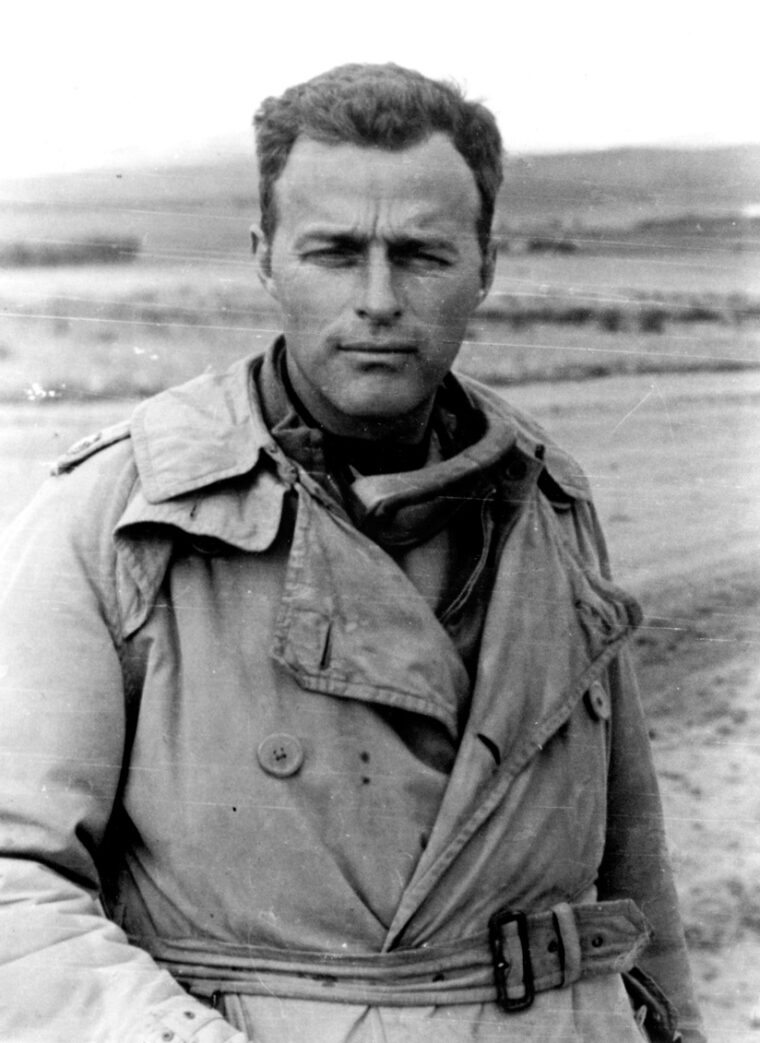
The Task Force’s Early Success
The American attack kicked off at 2100, March 26, 1945. A two-company task force of tanks and infantry, not attached to Baum’s group, attacked the little town of Schweinheim near Aschaffenburg to open a route for the rescue force. If anyone expected the Germans to roll over and let Baum and his men through, they were immediately disabused of the notion.
The Americans fought a vicious battle just to open the gate at Schweinheim. Several tanks were destroyed. Their crews and the armored infantrymen fighting alongside were the first casualties, although hardly the last, of the mission. Baum knew speed was vital to success, but had to wait with his men nearly five hours as the battle raged. Finally, at 0200 on March 27, with the fight still under way, Baum blasted his 50-vehicle column through the smoking town, moving quickly down the road to Hammelburg.
The American column raced through the first few villages meeting little or no opposition, firing at anything suspicious as they drove by. Turning due east they rumbled into the town of Lohr well into the Franken hill country. There they met their first serious resistance after Schweinheim. A Sherman exploded after being hit by a handheld Panzerfaust antitank weapon. The Stuarts of the recon platoon gamely took the lead. In no time they ran into a convoy of German trucks that they destroyed on the run with 37mm cannon and .50-caliber machine guns.
The Germans Put up a Fight at Gemünden
The column sped on toward the town of Gemünden on the River Saale. The Americans attacked several unlucky German trains they encountered along the way, wrecking vital parts of the disintegrating German rail system. In the task force’s own success, however, lay the seeds of its undoing. Across the front, German officers reacted sharply to the American breakthrough. They desperately tried to determine whether a raiding party had been set loose in the German rear or Baum’s little force was the vanguard of a major attack.
Meanwhile, in Gemünden, elements of a full German infantry division already guarded the bridge Baum had to cross to get to Hammelburg. The task force broke into the town, driving as fast as possible through the narrow streets, making for the vital bridge, fighting and taking casualties to men and machines.
When the vanguard reached the bridge and began to cross, a preset demolition charge exploded beneath them, killing and wounding several men. Baum had been wounded in the hand and knee in the confused and bloody fight through the town. In pain and with his small force taking more casualties with every passing minute, Baum hurriedly searched his map for an alternate river crossing. A captured German soldier told Baum of an intact bridge at the town of Burgsinn, six miles north. Baum located the town on the map and did not hesitate. Taking the German with them, Baum extricated the column and turned it north toward Burgsinn and the bridge to Hammelburg.
The column crossed the Saale at Burgsinn, now encumbered by casualties and over 200 German prisoners. Relentlessly, the Americans pressed on toward Graefdorf, about three- quarters of the way to their goal, the Task Force freed roughly 700 Russian POWs, leaving their unhappy German prisoners in the hands of the “friendly” Russians. Reorganized and nearly at their objective, Baum’s men motored down the last few serpentine miles of hilly road toward Hammelburg.
The Germans were not idle during the American actions behind their lines. By sunrise on March 27, as Task Force Baum approached Gemünden, German commanders had moved to close the breakthrough. Still uncertain whether the task force was a major American effort or a raiding party, they moved their best available tank force toward Hammelberg. This was a company of Jagdpanthers, recently arrived from the Eastern Front.
The Jagdpanther was Germany’s premier tank destroyer, a deadly combination of the Panther tank and the long 88mm gun usually mounted on the heavier and less mobile Tiger tank. Jagdpanthers were considered so valuable that German commanders deployed them on the Eastern Front only in company strength as mobile emergency units. A single company could stop a Soviet brigade on good terrain. Now these formidable machines, still aboard their trains in railroad siding in Schweinfurt, set off for the short ride north to Hammelburg.
The Task Force is Ambushed
Task Force Baum reached Hammelburg at about 1400 on March 27, barely 12 hours after their breakthrough at Schweinheim. They had to turn right on the roadway to reach the Oflag that was about two miles to the south. It was here that the German Jagdpanther commander, Hauptman (Captain) Richard Koehl, an experienced Eastern Front fighter, placed his tank destroyers. Koehl had gambled that the Americans would head for the Oflag and carefully sited his Jagdpanthers on favorable ground near the Hammelburg rail station where they had offloaded just a few hours earlier.
The battle-hardened American tankers leading the column spotted the German ambush a moment before the 88s opened up. Baum ordered the American tanks to fire on the Germans with everything they had and keep moving. There was no point in slugging it out with the more powerful German machines. Still, Baum’s aggressiveness paid off.
The American fusillade damaged a couple of the German tank destroyers. German fire hit many American vehicles as well. The thin-skinned half-tracks and jeeps carrying Baum’s vital extra fuel, ammo, and medical supplies proved especially vulnerable, and many went up in flames. Try though they did to bypass the ambush, tanks, half-tracks, and jeeps got hit as they forged up a long hill toward the Oflag. The Americans desperately needed some cover.
Baum ordered his Sherman 105mm platoon to take position on the hill and engage the Jagdpanthers with high explosive antitank (HEAT) rounds and white phosphorus smoke. The platoon commander, 24-year-old Staff Sgt. Charles Graham, positioned his tanks as ordered. Soon the American assault guns were trading blows with the Germans and scoring hits despite the uneven match. Another Jagdpanther was hit and withdrew.
Then Graham noticed a six-truck convoy heading toward the Germans (in fact carrying supplies of extra fuel and ammo). Graham’s men cut loose on the hapless German trucks and destroyed them all along with their stores of fuel and ammunition. Although the extra supplies of both sides had been ruined, the Americans had nothing but what they carried with them, while the German losses could, and would, be made good.
Baum Hesitates at the Gates and Pays for It
Graham’s heroics allowed Baum and what was left of the task force to reach the Oflag sometime between 1600 and 1700. As the Americans ground up the hill outside the Oflag, they engaged the defenders in a desultory fight that terrified both the POWs and the German garrison. For nearly two hours the Americans fired at the German defenders in the camp but did not storm the gates. Oberst (Colonel) Goeckel, the German commandant, with only a couple of companies of militia at his disposal and aware of his own weakness, found the Americans’ hesitation inexplicable.
Baum and his men had been operating nonstop for half a day against increasing German resistance. They were far behind enemy lines, had no intelligence as to German strength or dispositions, and had no plan for actually liberating the POWs as opposed to just getting there.
After about two hours of shooting, Goeckel evidently felt he had put on a sufficient show and decided to surrender the camp. Colonel Waters, who had hunkered down with the other prisoners during the battle, grabbed a hidden American flag, and with several other American officers walked out to meet the rescue force, hoping to organize a truce and a German surrender. As Waters approached the camp gate, a German soldier, unaware of Goeckel’s order, rose from his trench and shot Waters in the stomach. Waters’ comrades immediately rushed the critically injured Colonel to the prison hospital. He completely missed, and indeed barely survived, the culmination of the raid to free him.
The engagement with the Jagdpanthers at Hammelburg ended any German doubt that the Americans were a raiding party as opposed to the vanguard of a much larger force. Koehl had remained in place and saw that nothing followed the small task force. While Baum uncharacteristically dithered outside the camp, the German command rushed reinforcements to Hammelburg. Soon German infantry and engineers were moving into the hills and along the roadways the Americans would need for their escape. Task Force Baum was on its own. The Germans, though just weeks from utter defeat, would not miss the opportunity to annihilate the American force that had ravaged and embarrassed them in its 60-mile dash from the Main.
The Camp is Freed but Baum is Trapped
Sometime before 2000, American tanks finally smashed through the prison gates to the cheers of emaciated American and Serbian POWs. There were many more of them than Baum had been led to believe. Harold Inge, an American POW, described how the jubilant prisoners “gathered around the tanks in small groups as darkness descended.” The American tankers passed out rations and cigarettes to the grateful POWs. Waters was nowhere to be found. Organizing, arming, and loading the prisoners with any semblance of order proved impossible.
After further delay, with much milling around, congratulations, and continuing exchanges of GI goodies, Baum realized he had to move out or be trapped. There was adequate space on the vehicles for only a relatively small number of POWs. Fewer still were in sufficient physical condition to reach American lines on their own.
Inge and five or six other prisoners clambered aboard a Sherman. Small groups of other POWs did the same, or piled into overcrowded half-tracks. Among them was Colonel Paul Goode, the senior American POW. Most of the weakened prisoners guessed the American force was too small to make it and chose to remain in the camp to await the main American effort, which they now knew could not be long in coming.
Inge remembers, “As we moved out, the cold wind blew in my face, and I had an exhilarating and wonderful feeling of freedom.” It would not last. The next few hours brought what might be called “Baum’s Last Stand.” The surviving vehicles and men of the task force, along with a few score of prisoners, immediately ran into German ambushes along the narrow country roads. German forces in the area, which far outnumbered the Americans, quickly surrounded the task force.
For the Germans, this was an opportunity to exact a cruel vengeance against a small, vulnerable, and weakened part of an otherwise invulnerable and implacable host. German infantry and engineers, armed with Panzerfausts and positioned behind good cover in the hilly terrain, destroyed many of the remaining American vehicles. Here and there American infantry dismounted and battled the Germans, sometimes aided by armed prisoners. The Sherman and Stuart tanks fired the last of their ammunition in desperate fights through the gloaming hills. The formidable Jadgpanthers, joined by additional German forces, now moved in for the kill.
Captured and Wounded, Baum and Waters Meet in Hospital
Baum rallied the survivors in a few tanks, jeeps, and half-tracks astride a small valley a few miles from the camp. His own men stood by him, but Colonel Goode and most of the remaining POWs, figuring the situation was hopeless, abandoned the task force and marched on their own back into captivity. Baum and his men fought on until the last Shermans were aflame or out of ammunition, then broke into small groups to make their escape. A few succeeded, but most were captured or fell in the attempt. Baum, along with several other soldiers, ran into a small wood where, after a brief fight, they gave themselves up. Task Force Baum was no more, annihilated as completely as Colonel Waters’ force had been two years earlier.
The next time Baum saw the Hammelburg Oflag was as a prisoner. Having suffered many wounds in the fighting, he was placed in the camp hospital not far, he soon realized, from his elusive prize, John Knight Waters. Within days the camp was liberated by units of the 14th Armored Division (the 4th Armored, according to plan, attacking northward on an axis far from Hammelburg). Waters and Baum, both prisoners, both wounded, and both heroes in lost causes, met at Waters’ bed a few days after the raid.
Waters was informed that the mission, which had cost so many lives, had been to rescue him; he would not believe it and Baum did not want to believe it. Whether the two discussed their adventures and the irony of their brave but doomed missions is not recorded. What is known is that the next day Patton’s personal physician arrived at the camp in a small plane and whisked Waters away, leaving Baum and the hundreds of other American ex-POWs in the camp to await evacuation by the slow but steady gears of the U.S. Army.
Baum Keeps Patton’s Secret
Patton denied to Waters that he knew his son-in-law was at Hammelburg when they were finally reunited at the 34th Evac. Hospital in Gotha. He awarded Waters two Silver Stars, which had been recommended by other commanders. Patton then moved on to Baum’s room. The young captain had been evacuated and sent to Gotha several days after Waters. The general pinned the Distinguished Service Cross on the captain’s pajamas. Patton announced that Baum had been promoted to major and congratulated him for doing “one helluva job.” Baum recorded that Patton seemed uncharacteristically cautious and formal until Baum broke the tension.
“You know, sir, it’s difficult for me to believe that you would have sent us on that mission just to rescue one man.”
“That’s right Abe, I wouldn’t,” said Patton. Now the general visibly relaxed, realizing that Baum accepted, at least publicly, Patton’s excuses for the raid. For the next hour Baum and Patton amiably argued about tank tactics. Neither said anything more about the raid.
Within a year, Patton was dead and the Hammelburg raid was classified “Top Secret.” Losses to the task force were officially put at nine dead, 32 wounded, and 16 missing in action, with the rest supposedly having made their way back to American lines or captured with Baum. According to Charles Whiting, only about 20 of Baum’s men made it back on their own, and the Germans only claimed about 100 additional prisoners from the task force, leaving about 130 men unaccounted for.
After the war, the surviving members of the task force scattered as the victorious American Army demobilized. After a detour advising the nascent Israeli Defense Force on armored warfare during the 1948 War of Independence, Abe Baum returned to the garment industry. Baum, as Patton said at their last meeting “was one of the best.” But he was, like many accomplished American soldiers throughout history, a temporary warrior.
Waters, on the other hand, resumed his career, retiring as a four-star general in 1966. Among his other duties was a stint as commandant of West Point in 1951-1952. Whether he taught his cadets the lessons of Kasserine and Hammelburg is not known.
Jonathan F. Keiler left his law practice some years ago to teach high school in Bowie, Md. He is a veteran of the U.S. Army and last wrote for WWII History about the German Ferdinand assault gun.
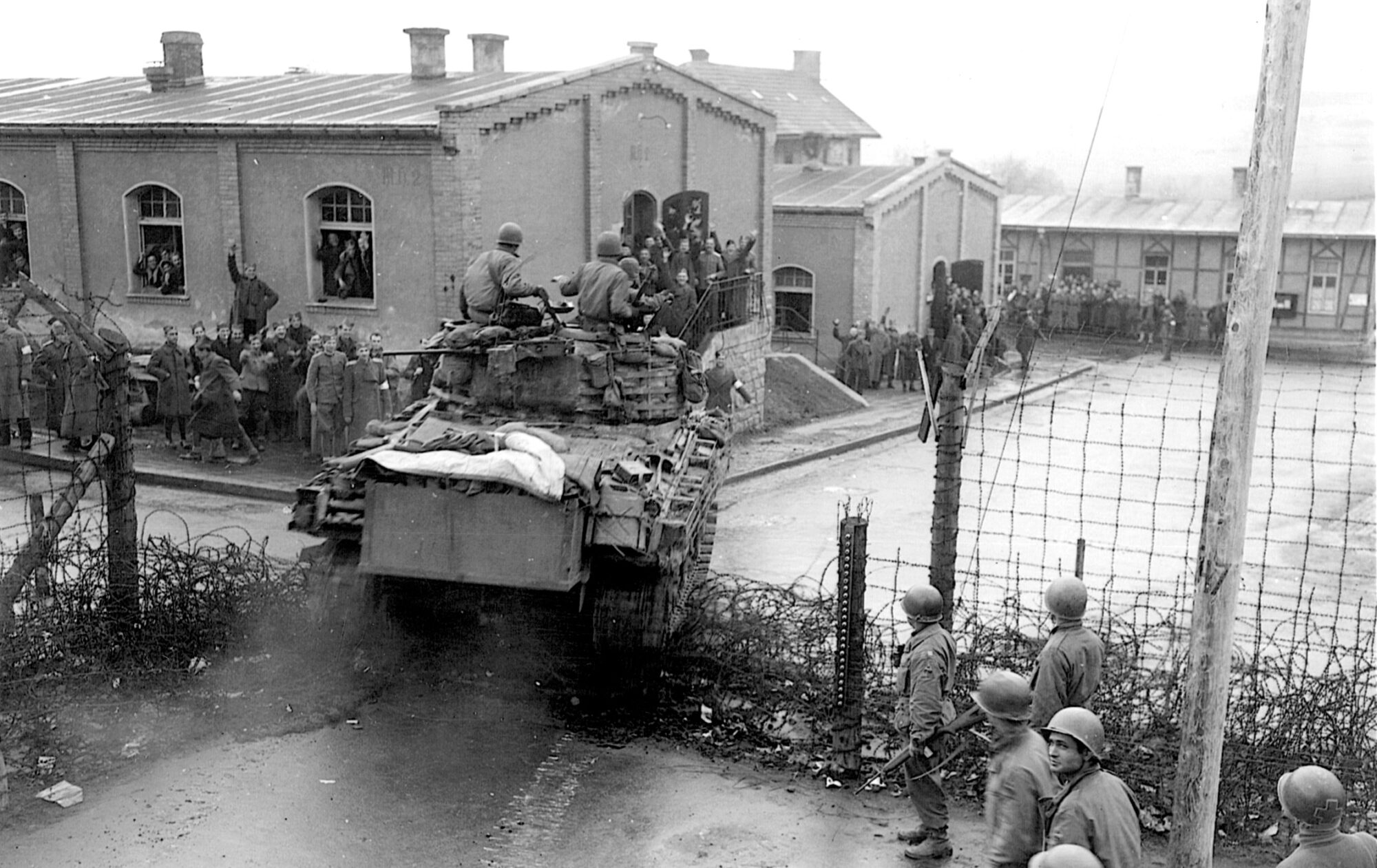

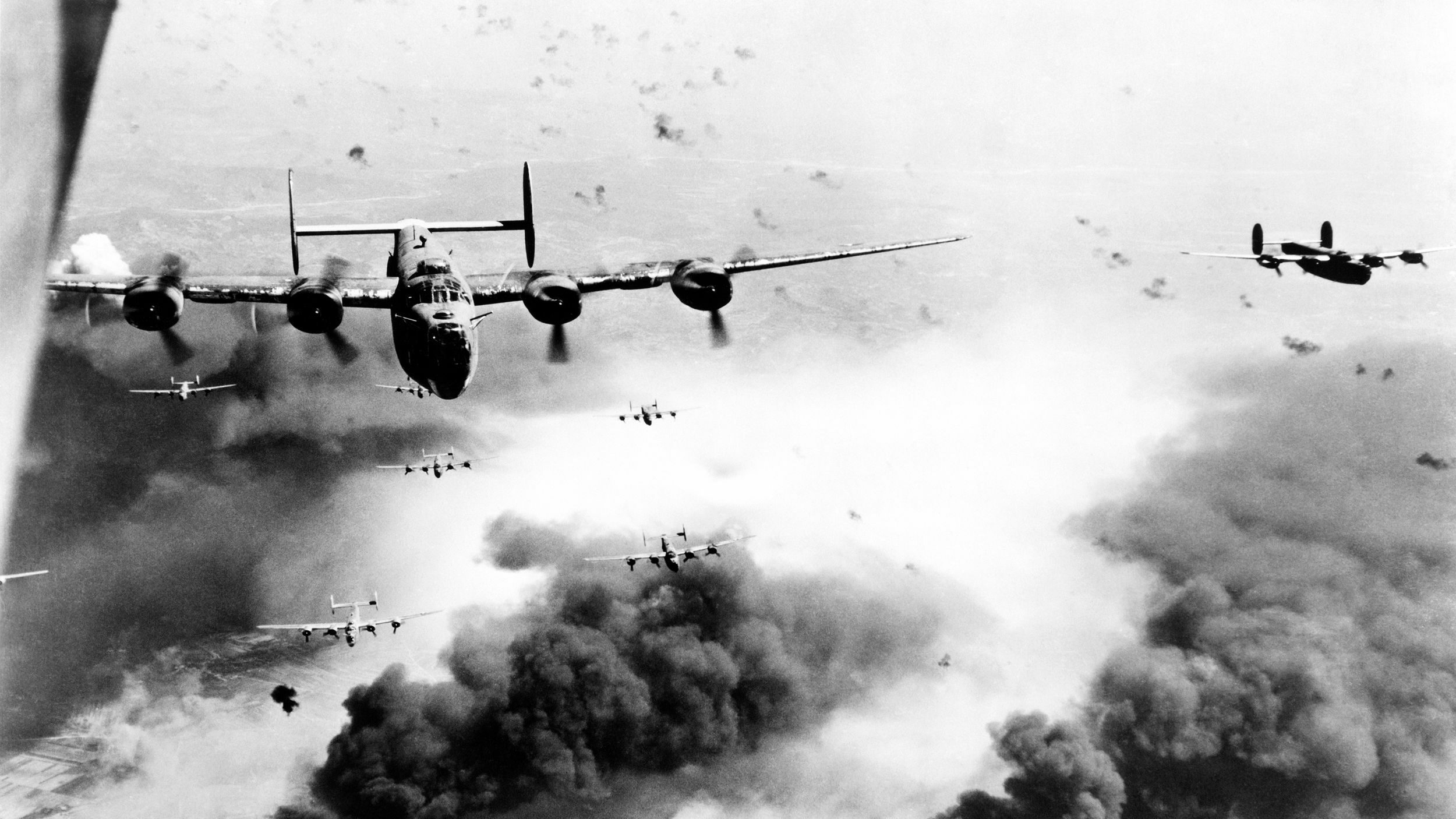
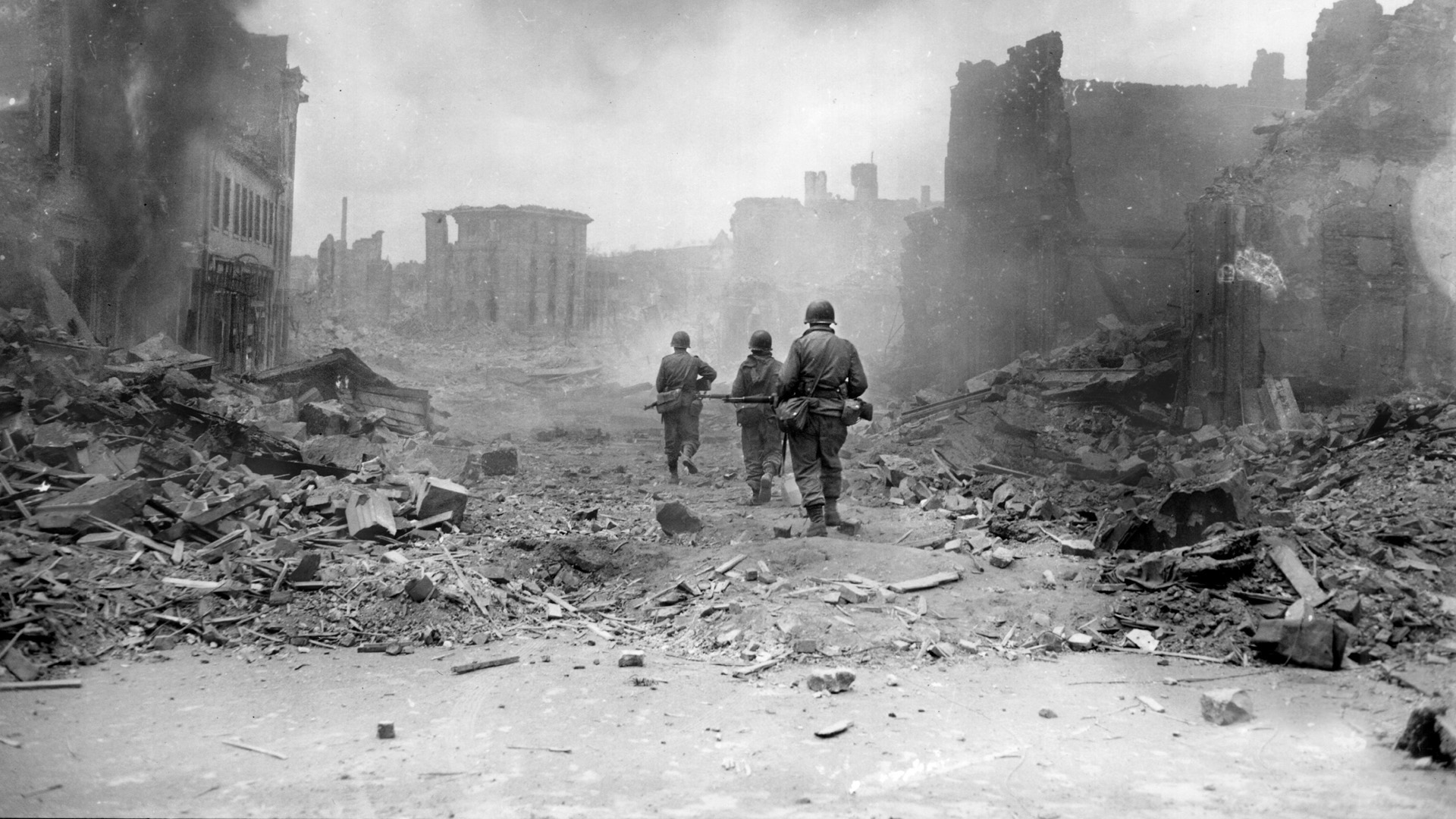
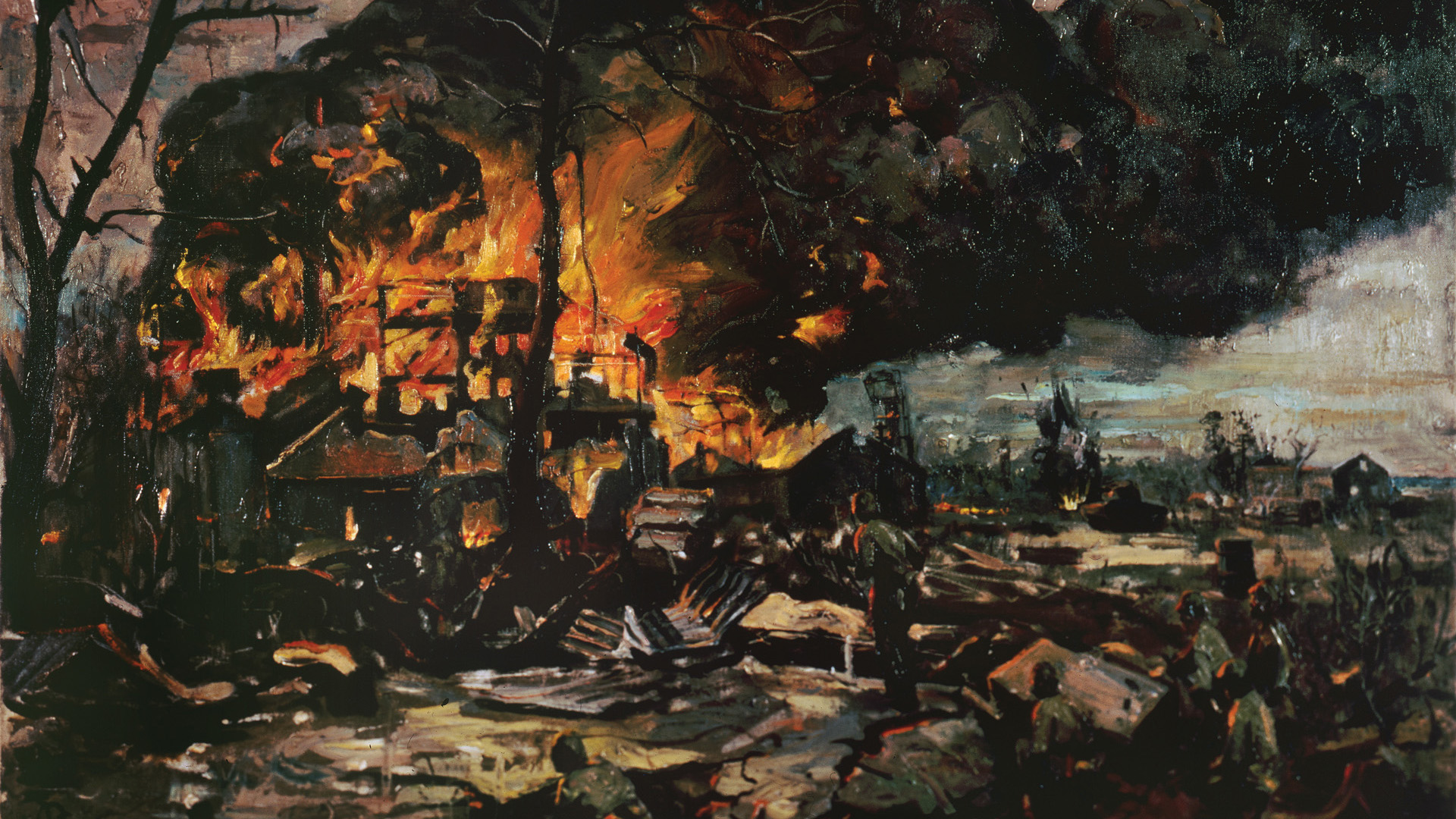
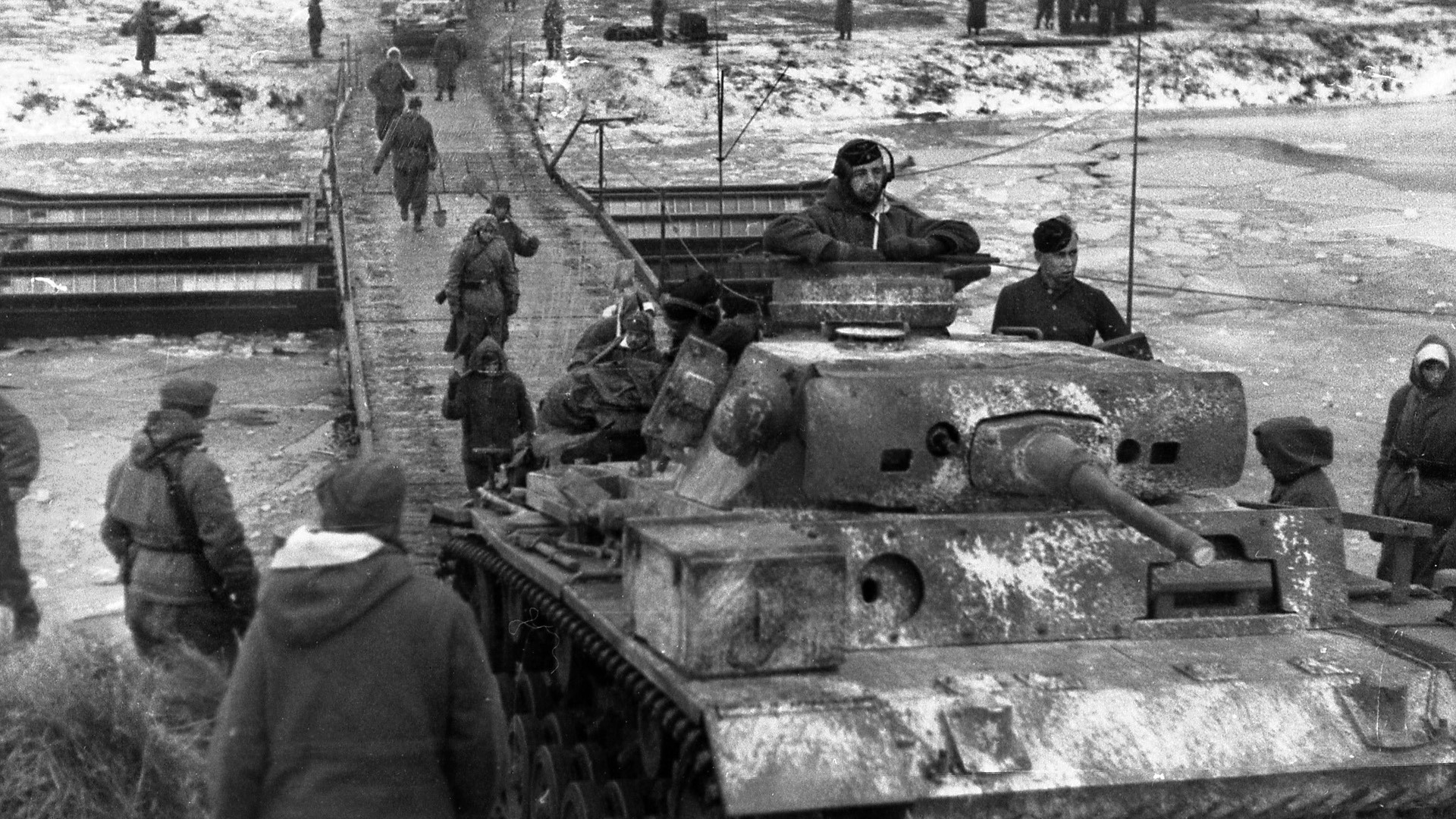
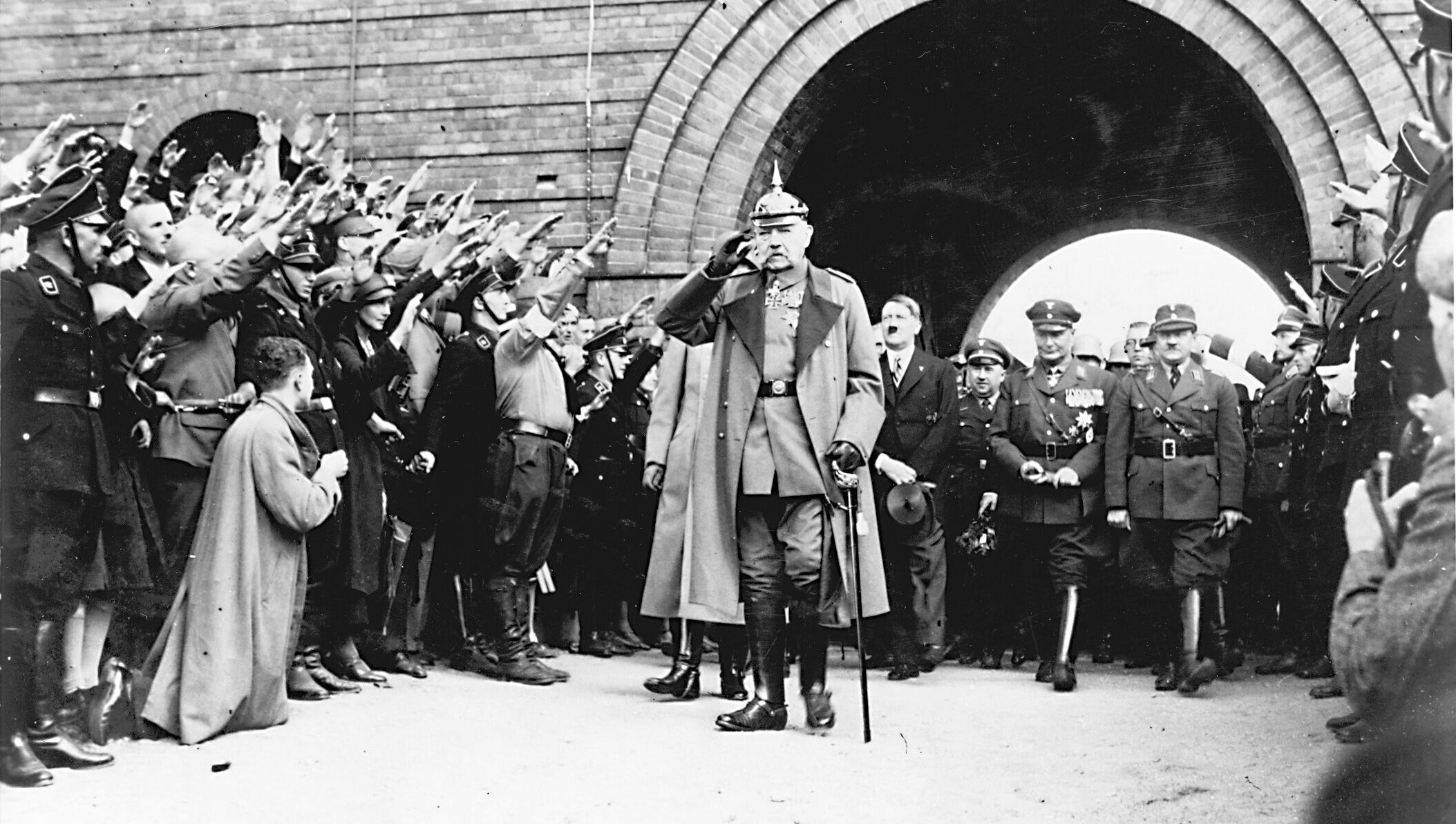
Join The Conversation
Comments
View All Comments